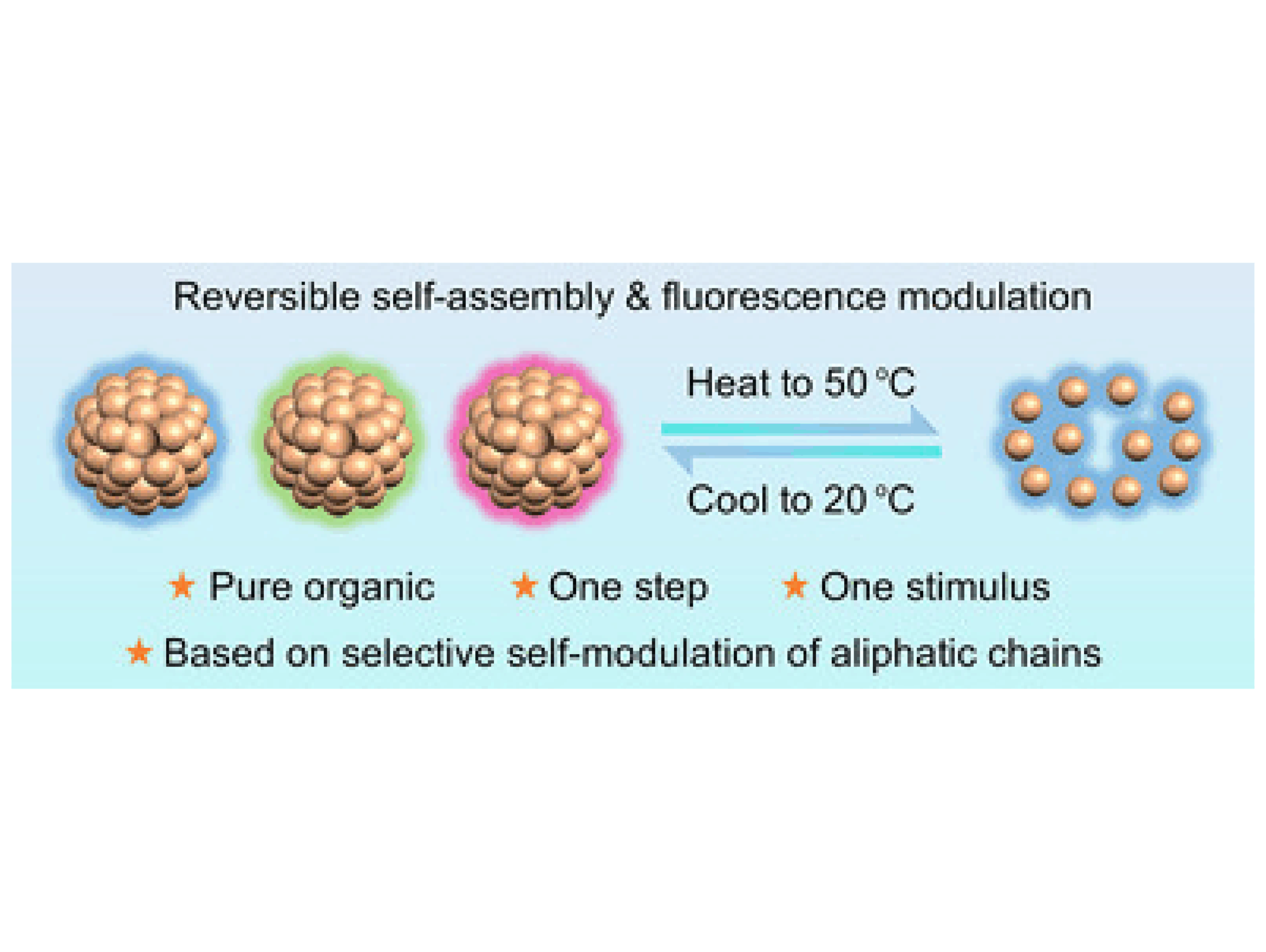Scientists are interested in making nanoparticles that can assemble and disassemble repeatedly (reversible self-assembly) because such behavior can create materials that adapt or respond to their environment (adaptive and smart materials). However, achieving this is difficult because it requires very precise control over both thermodynamics and kinetics, which are often hard to satisfy simultaneously. Most reported examples rely on inorganic-core nanoparticles that must be surface-functionalized with specific stimuli-responsive ligands.
Kai Zhang, University of Göttingen, Germany, and colleagues have demonstrated reversible self-assembly of fully organic nanoparticles without external stimuli-responsive ligands. The team synthesized a simple monosaccharide ester, D-glucose 11-octadecylthioundecanoate (D-Glc-C11S18E), which self-assembles into microspheres (3–6 μm) made of smaller nanospheres (100–300 nm). Two types of lamellar domains coexist within these microspheres: thermally stable C29 lamellae inside the nanospheres and thermally reversible C18 lamellae at the nanosphere interfaces. Upon heating to 50 °C, the C18 lamellae disassemble while the C29 lamellae remain intact; cooling regenerates the C18 lamellae.
This reversible switching drives reversible microsphere-to-nanosphere transitions in methanol, confirmed by scanning electron microscopy (SEM) and dynamic light scattering (DLS). Importantly, the structural modulation is accompanied by reversible fluorescence modulation, both persisting without apparent fatigue over multiple cycles. Leveraging the temperature- and wavelength-dependent fluorescence, the researchers constructed a multi-input logic gate, highlighting potential in smart and fatigue-resistant optoelectronic applications.
- Reversible Self-Assembly of Monosaccharide-Based Nanoparticles With Reversible Fluorescence Modulation
Cheng Li, Wenbin Liu, Evgeny Nimerovsky, Loren B. Andreas, Philipp Vana, Caoxing Huang, Qiyun Tang*, Kai Zhang*
Aggregate 2025
https://doi.org/10.1002/agt2.70142




